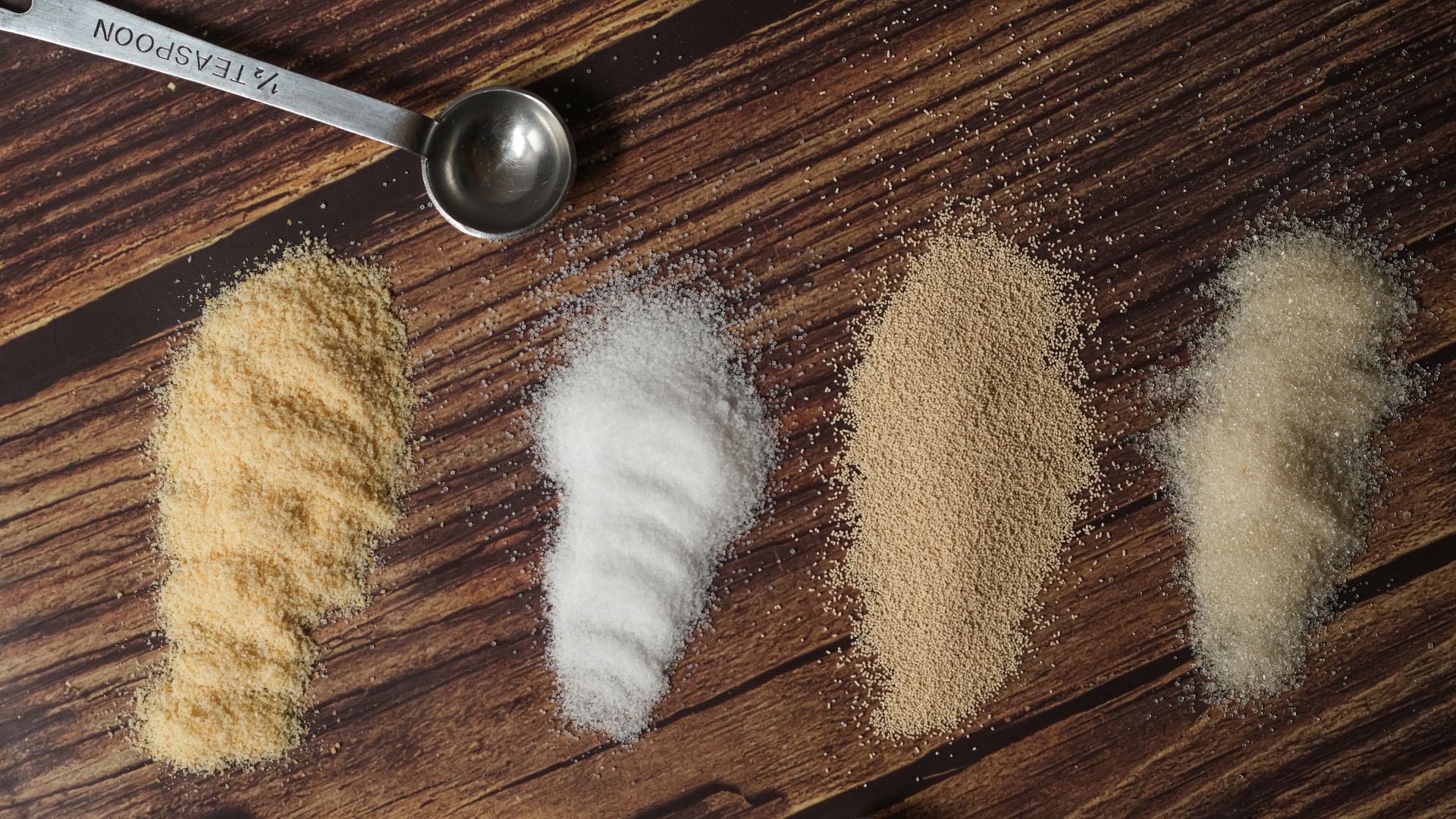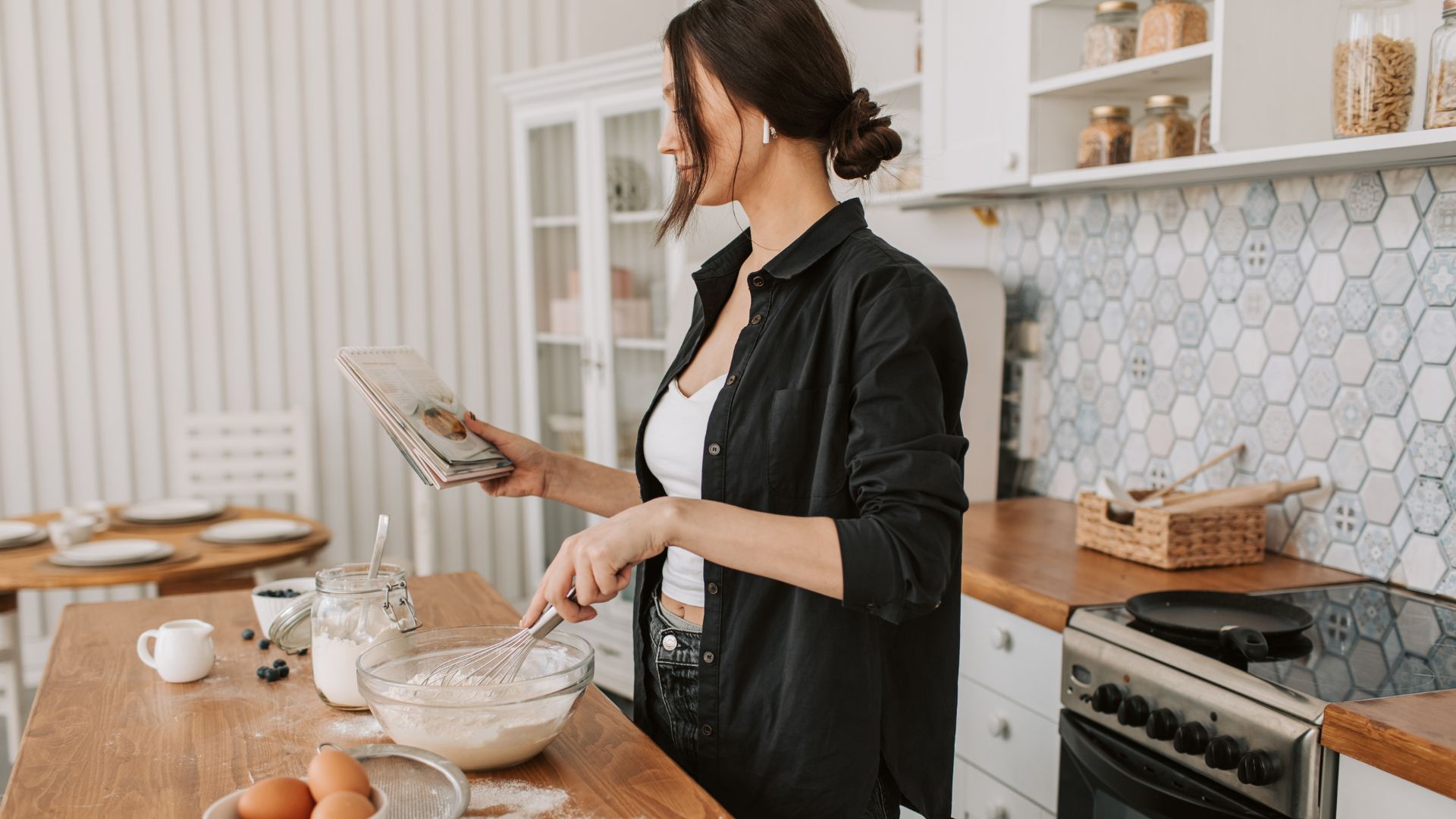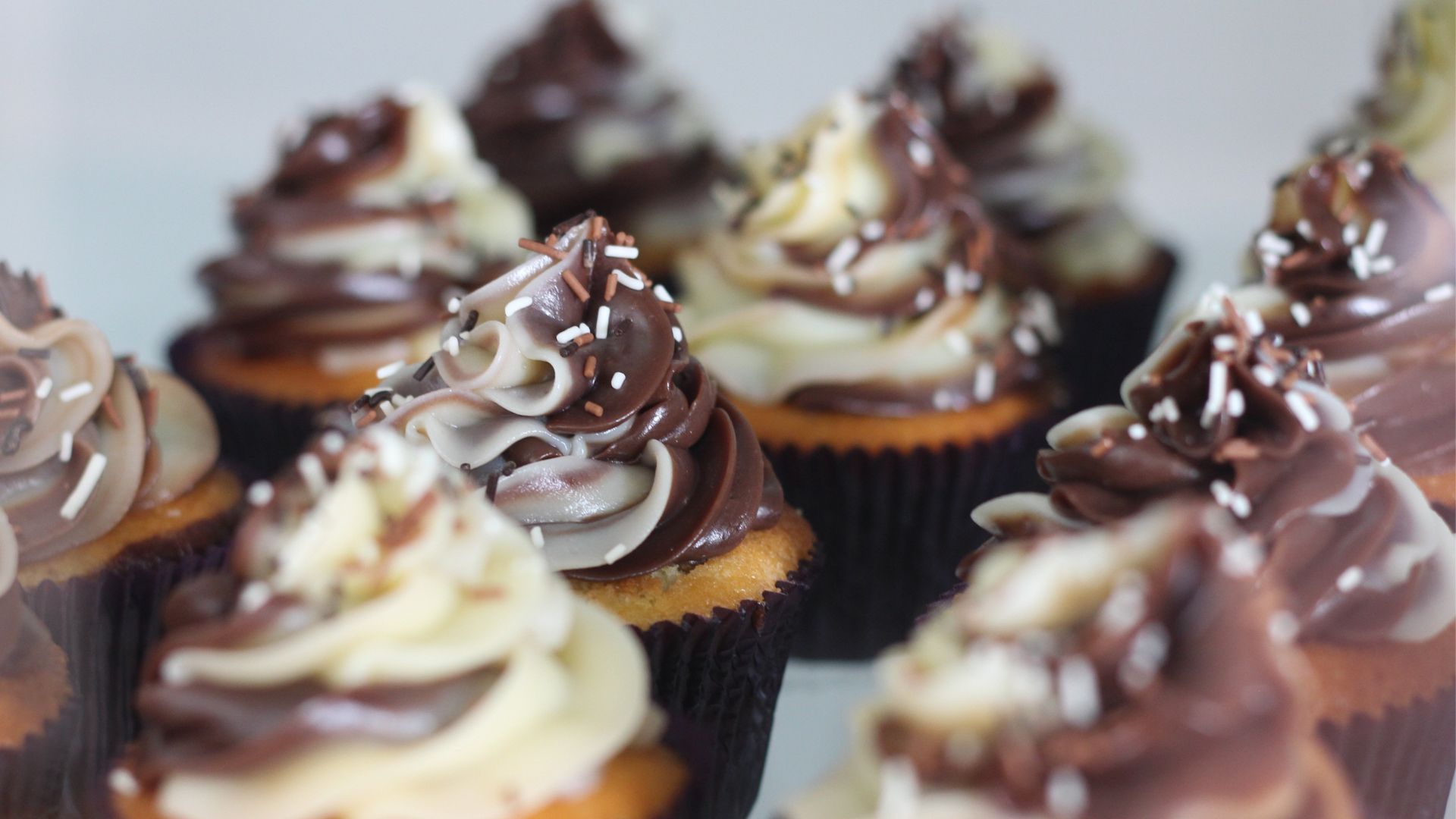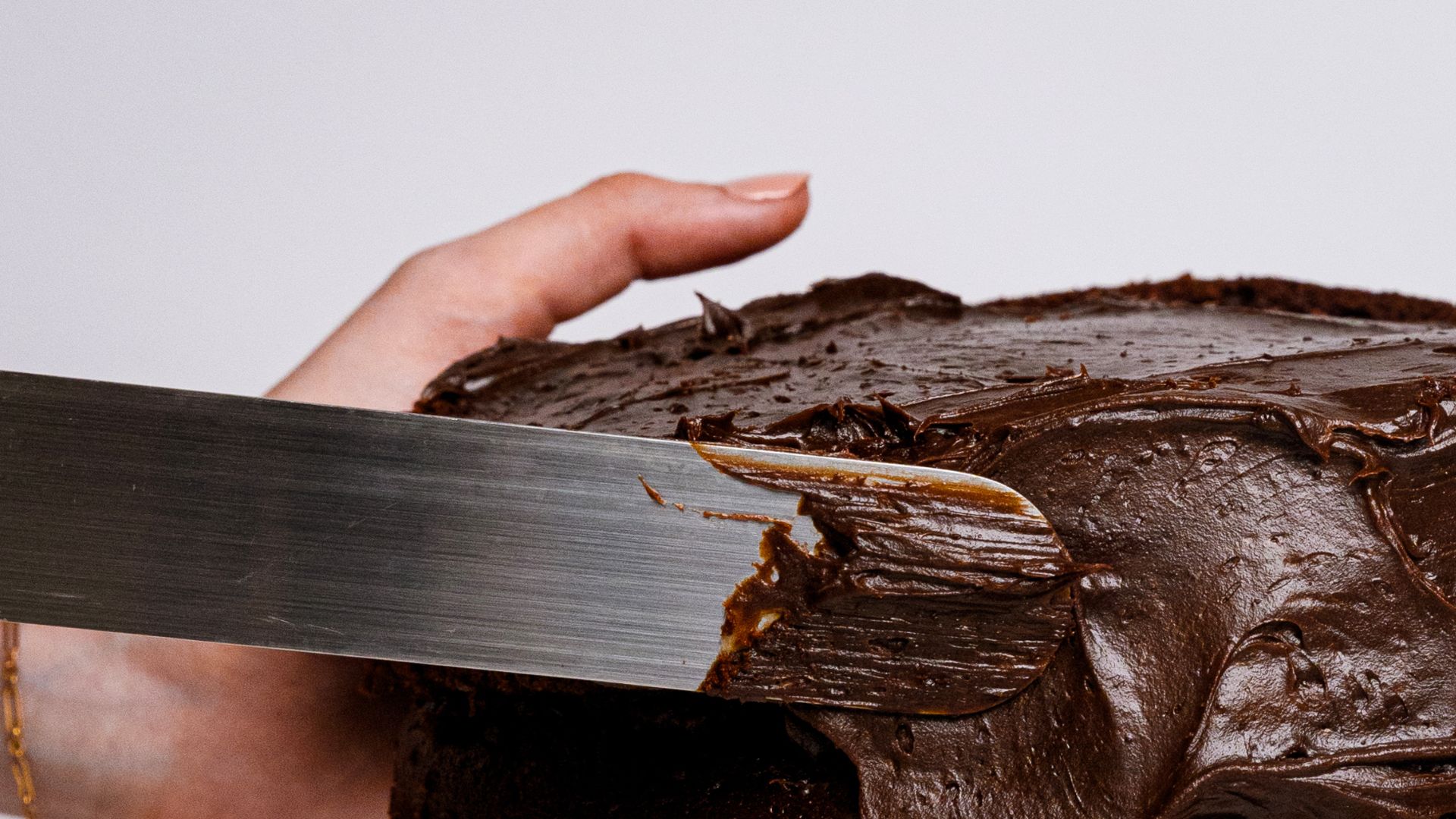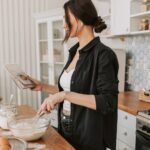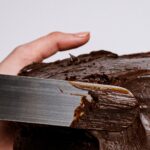Cupcakes are the perfect treat. They’re portable, adorable, and easily customised to suit any occasion. Whether you’re hosting a party, baking for a special celebration, or just want a sweet snack, cupcakes offer all the joys of cake in a convenient, individual serving. What’s even better is that you don’t need to follow a separate cupcake recipe to make them! It’s easy to transform your favourite cake recipe into cupcakes with just a few simple adjustments.
In this article, we’ll walk you through the steps of converting your cake batter into cupcakes, so you can enjoy the same delicious flavours in a more fun, bite-sized form:
- Why cupcakes are so popular
- Adjusting ingredients
- Baking the cupcakes
- Decorating cupcakes
- Storage tips
- Cake to cupcake: Easy and fun
Why cupcakes are so popular
Cupcakes have become a popular choice for many bakers and dessert lovers for several reasons. First, they’re the perfect single-serving dessert. Unlike a large cake, which requires slicing and serving, cupcakes can be eaten directly without any fuss. They’re also incredibly versatile – you can personalise them with different flavours, fillings, and decorations to match any theme or occasion.
Another reason cupcakes are so loved is their convenience. They’re portable and easy to serve, making them ideal for parties, picnics, or any event where you need a crowd-pleasing treat. Plus, their individual size means you can easily try a variety of flavours without committing to a large cake.
The best part is that cupcakes can be made with your go-to cake recipe! So, if you have a favourite cake flavour you love, turning it into cupcakes is a great way to shake things up and enjoy your cake in a new, fun way.
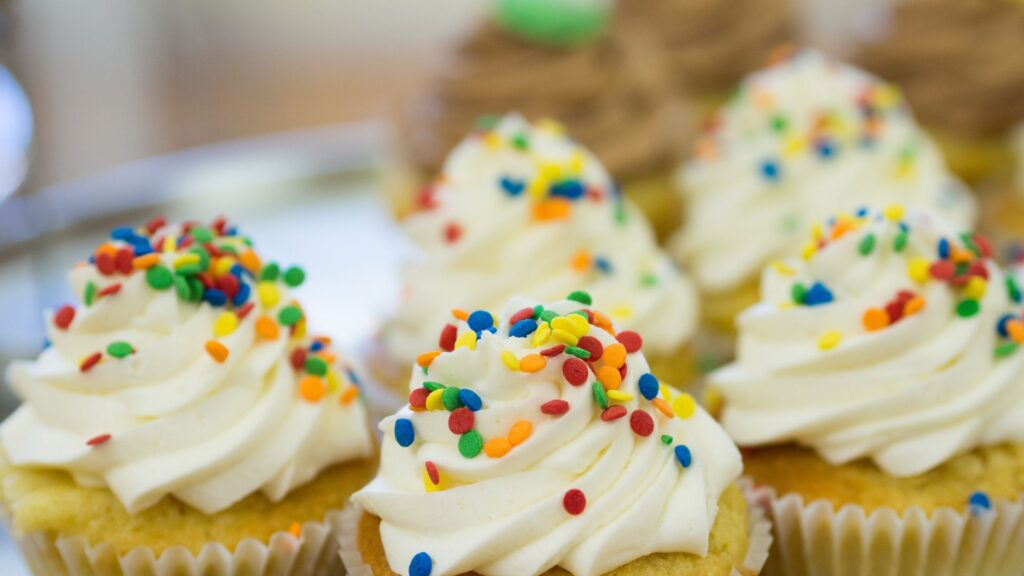
Adjusting ingredients
When turning your favourite cake recipe into cupcakes, you’ll need to make some slight adjustments to the ingredients and method. While the ingredients for both cakes and cupcakes are mostly the same, the key differences come in the baking time and the amount of batter used for each cupcake.
Baking time:
Cupcakes cook faster than cakes due to their smaller size, so you’ll need to reduce the baking time. If your cake recipe calls for a 35-40 minute baking time, start checking your cupcakes around the 18-20 minute mark. Use the toothpick test to check for doneness – simply insert a toothpick into the centre of a cupcake, and if it comes out clean or with just a few crumbs attached, they’re ready.
Ingredient proportions:
Most cake recipes can be directly converted into cupcakes without altering the ingredients, but you may need to adjust the amount of batter you use per cupcake. Typically, you’ll want to fill each cupcake liner about 2/3 full, which is slightly less than you would pour into a regular cake pan. This allows the batter to rise properly without overflowing or creating a mess. Be careful not to overfill the liners, as cupcakes tend to rise more than cakes and can spill over if they’re too full.
Consistency of the batter:
Cupcake batter is typically a little thicker than cake batter, so if your cake batter is very runny, you may want to reduce the amount of liquid slightly. This will help ensure the cupcakes hold their shape and rise evenly during baking.
Baking the cupcakes
When baking cupcakes, there are a few tips and tricks that can help you achieve that perfect, uniform texture.
Preheating the oven:
As with any baked good, preheating your oven is crucial for ensuring that your cupcakes bake evenly. Set your oven to the temperature specified in your cake recipe (usually around 180°C or 350°F), and allow it to fully preheat before putting your cupcakes in.
Filling the cupcake liners:
Use a spoon or ice cream scoop to evenly distribute the batter into the cupcake liners. A good rule of thumb is to fill each liner about 2/3 full, as mentioned earlier. This gives the cupcakes enough room to rise and form a nice, rounded top. If you’re using a cupcake tray, be sure to line it with paper cupcake liners or grease it lightly to prevent sticking.
Monitor the bake time:
Cupcakes tend to bake more quickly than larger cakes, so keep a close eye on them. Start checking them after about 18 minutes, but don’t be afraid to open the oven door to check. If the tops are golden brown and a toothpick comes out clean, they’re done. If not, bake for an additional 2-3 minutes, and check again.
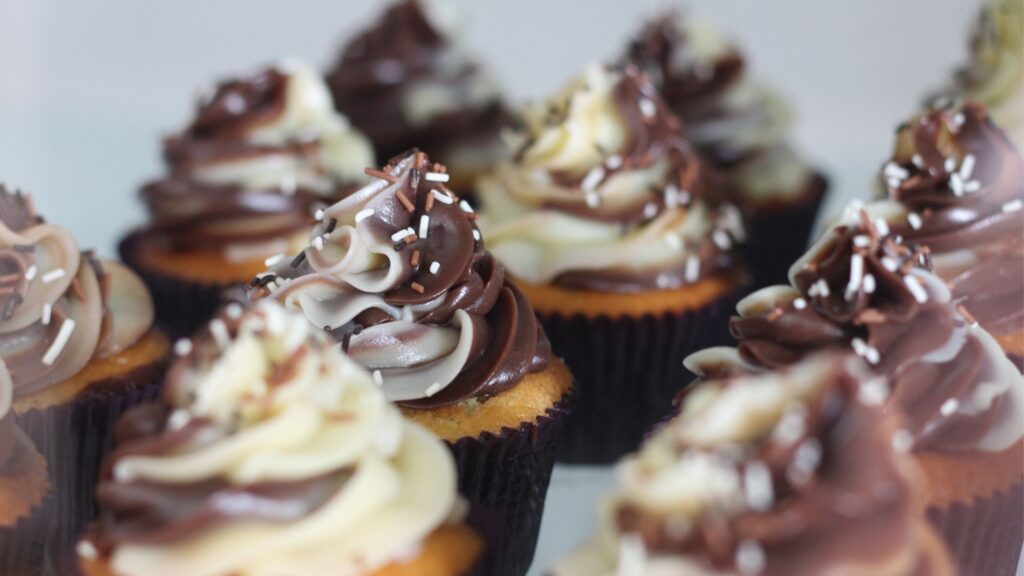
Decorating cupcakes
Decorating cupcakes is where the fun really begins! There are endless possibilities for toppings and decorations, from simple frosting to elaborate designs. Here are a few ideas to get you started:
Frosting:
Buttercream frosting is a classic choice for cupcakes. You can make it in any flavour you like – from vanilla and chocolate to strawberry and lemon. Use a piping bag with a star tip to pipe beautiful swirls on top of each cupcake. If you want a smoother finish, you can use a spatula to spread the frosting evenly over the top.
Piping designs:
For more intricate designs, piping is the way to go. Use different piping nozzles to create flowers, rosettes, or other decorative patterns. You can also use fondant to create shapes and figures to place on top of your cupcakes for extra flair.
Toppings and Sprinkles:
Don’t forget the fun details! Sprinkles, edible glitter, or a dusting of cocoa powder can add a playful touch to your cupcakes. You can also get creative with mini chocolate chips, candy pieces, or fresh fruit for added texture and flavour.
Storage tips
Cupcakes are best eaten fresh, but if you have leftovers, there are a few things you can do to keep them fresh for longer.
Room temperature storage:
Store your cupcakes in an airtight container at room temperature for up to 2-3 days. This will keep the cupcakes soft and prevent them from drying out. Be sure to place parchment paper between layers if you’re stacking them.
Refrigeration:
If your cupcakes are topped with cream cheese frosting or any other perishable frosting, it’s best to refrigerate them. Just make sure to store them in an airtight container to prevent them from absorbing any unwanted flavours from the fridge.
Freezing:
If you have extra cupcakes, you can freeze them for later. Freeze them without frosting, as frosting doesn’t freeze well. Once frozen, wrap each cupcake individually in plastic wrap and store them in a freezer-safe container. To thaw, let them sit at room temperature for about an hour before decorating.
Cake to cupcake: Easy and fun
Turning your favourite cake recipe into cupcakes is a simple and fun way to enjoy your favourite flavours in a new form.
Let’s recap:
- Cupcakes are portable, fun, and versatile, making them perfect for parties and celebrations. They offer all the joy of cake in a convenient, single-serving format.
- Fill cupcake liners about 2/3 full to allow for rising. Reduce the baking time (around 18-20 minutes) and adjust the liquid if your cake batter is too runny.
- Preheat the oven and bake at the same temperature as your cake recipe. Start checking the cupcakes after 18 minutes using the toothpick test to ensure they’re fully baked.
- Use buttercream frosting for a classic look, or get creative with piping, fondant decorations, sprinkles, and edible glitter to make the cupcakes visually stunning.
- Store cupcakes at room temperature in an airtight container for up to 2-3 days. Refrigerate cupcakes with perishable toppings and freeze undecorated cupcakes for long-term storage.
💡Pro Tip: To ensure your cupcakes bake evenly, rotate the baking tray halfway through the baking time. This helps them rise uniformly, especially if your oven has hot spots, ensuring each cupcake has a perfect, golden top.
By adjusting the baking time, portioning the batter properly, and getting creative with frosting and decorations, you can make cupcakes that are just as delicious – if not more so – than a traditional cake. Whether you’re baking for a special occasion or just because, cupcakes are a treat everyone will enjoy. Happy baking!


